Presentation
35-year-old male patient presents with 2 weeks of gait disturbance, bilateral upper limit sensory changes, spastic gait, and bilateral sustained clonus.
Patient Data
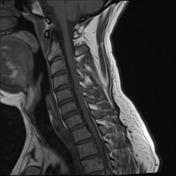



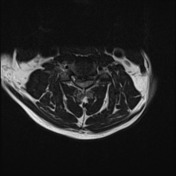

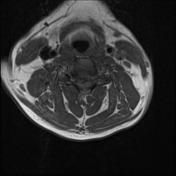

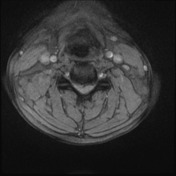

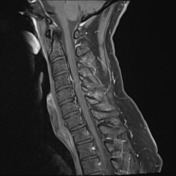

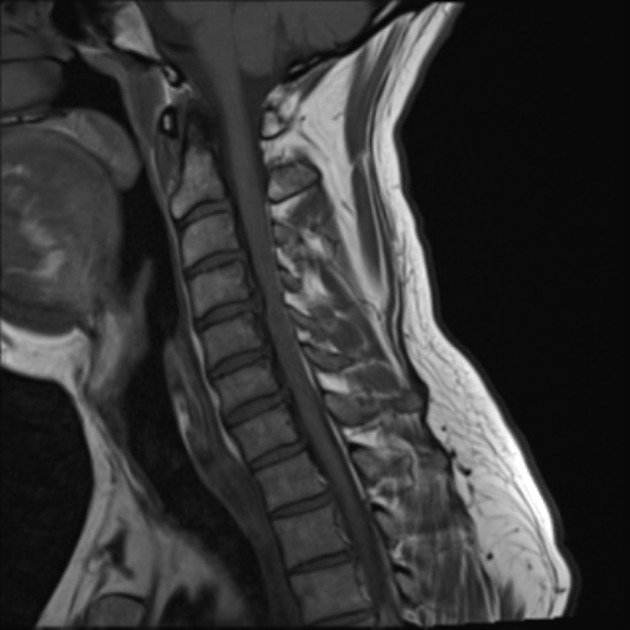
Straightening of the cervical spine lordosis. Vertebral bodies have normal height, signal, and alignment.
C3/4: broad-based posterior disc osteophyte complex minimally flattening the cord. Disc-osteophyte complexes moderately to severely stenosing both intervertebral foramina at this level.
C4/5: broad-based posterior disc osteophyte complex with a right paracentral extrusion compressing the cord. There are moderate canal stenosis and moderate increased cord signal on T2 at this level. Disc-osteophyte complexes moderately to severely stenosing both intervertebral foramina at this level.
C5/6: broad-based posterior disc osteophyte complex touching the cord. Disc-osteophyte complexes moderately stenosing the intervertebral foramen on the left and severely on the right.
C6/7: broad-based posterior disc osteophyte complex touching the cord. Disc-osteophyte complex mildly stenosing the intervertebral foramen on the right.
The cord is otherwise unremarkable in caliber and appearance, with no abnormal enhancement. No abnormal flow-voids. Paravertebral soft tissues are unremarkable.
Case Discussion
Multilevel disc disease and foraminal stenosis with canal stenosis and compressive myelopathy at C4/5.




 Unable to process the form. Check for errors and try again.
Unable to process the form. Check for errors and try again.